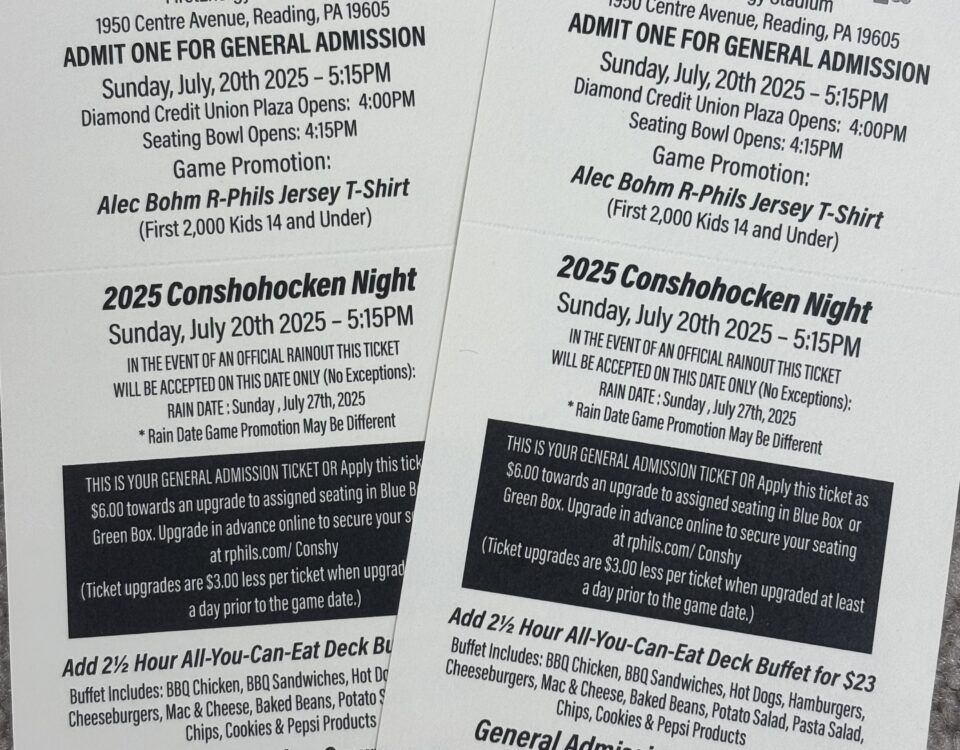
Student Athlete Spotlight – PW Football – Jack Hildebrand
September 2, 2020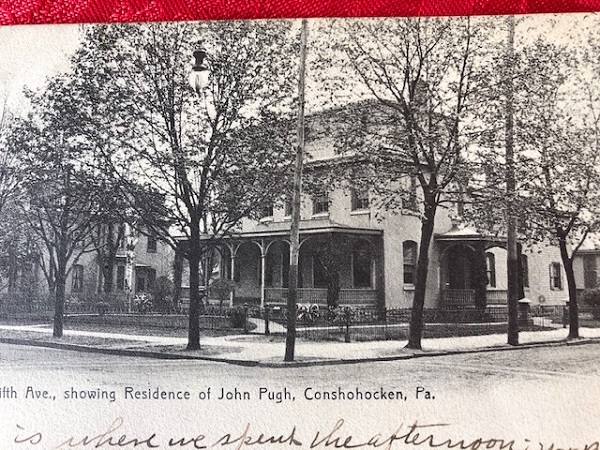
History of a House – 103 East 5th Ave. Have you Ever Heard of John Pugh?
September 10, 2020History of a House -352 East 6th Avenue. An Extraordinary Man Lived Here – Reverend Abram Lee
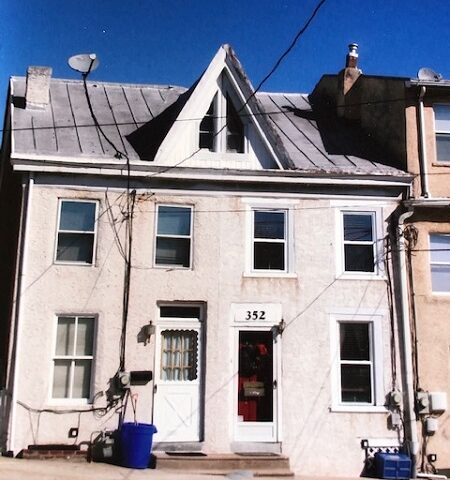
History of a House
352 East Sixth Avenue
An Extraordinary Man Lived Here
Reverend Abram Lee
By Jack Coll
REVEREND ABRAM LEE
BORN February 1847
DIED 1951
Below are excerpts taken from the book “Conshohocken & West Conshohocken, People, Places and Stories” written by Jack and Brian Coll
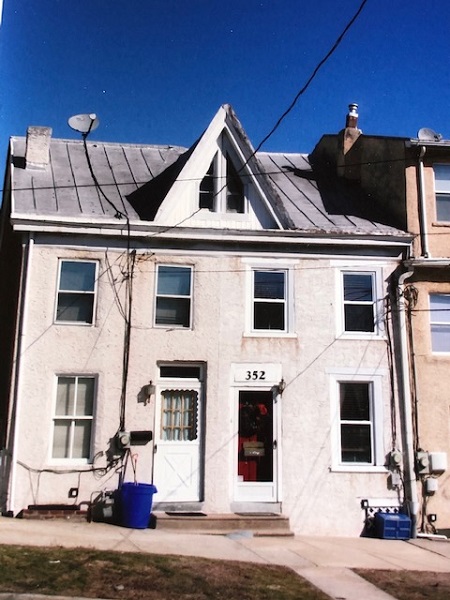
Abram Lee was born a slave in 1847 in the country’s Southland and as a young man was witness to the Civil War and had seen Abraham Lincoln in person. He moved to Conshohocken in 1889 as a free man and settled in to a row house at 352 East Sixth Avenue. The house was part of a line Victorian Gothic Revival houses from 334-360 East Sixth Aveune all built around 1870.
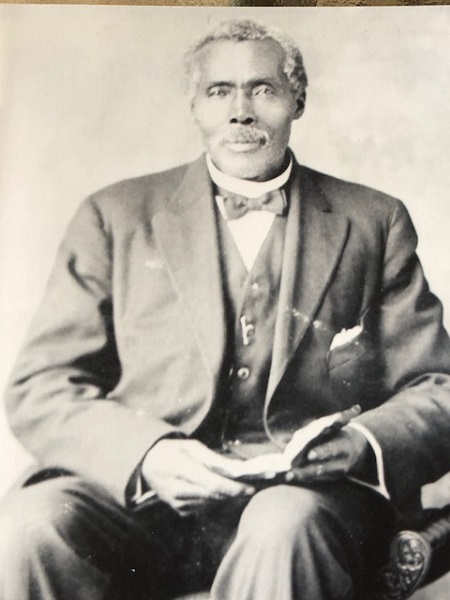
Abram lived to be 104 years old passing away in 1951, and from the many interviews granted to the Conshohocken Recorder Newspaper in his later years, Abram had quite a life story to tell.
Abram was the father of 13 children including Reverend Marshall W. Lee, the former Pastor and founder of St. Paul’s Baptist Church. His youngest daughter died as a baby.
According to Abram’s Great-Great-Great Grandson Don West, Jr. when Abram was a young boy and still a slave, the madam of the plantation killed his brother with the heel of her shoe by beating him to death, young Abram witnessed his brother’s death firsthand. Abram’s slave surname was Slaughter. When he was a little boy he was sold to another master and separated from his mother and siblings. When he was set free he tried to find his mother and siblings but was unsuccessful in doing-so. As a young man Abram changed his name from Slaughter to Lee.
As a slave Abram worked under various masters on a number of southern plantations until the great Emancipation Proclamation went into effect throughout the country on January 1, 1863. Abram stated in a 1950 interview that “The masters were of different kinds, but I was most of the time with Major Clark Timberlake—we called him “Major Timlek.” Clark was the son of Jon Walker Timberlake, a Methodist preacher in Virginia.
Abram went on saying, “We had plenty to eat, comfortable cabins and every year we got a new coat and a pair of trousers and every other year an extra pair of trousers. A dressmaker from Lynchburg would come down and measure us and make our clothes. We had good shoes, too. Sometimes we got some of the master’s old clothes—but they were so fine, we just kept them for state occasions.”
Abram noted that there were no schools or schooling allowed because the masters felt if slaves gained knowledge it might promote their freedom. Abram stated that there was only one slave he met who could read, but couldn’t write.
Abram would often talk about the slave spirituals, “We’d leave our cabins one by one so the white folks wouldn’t notice anything. When we’d start the meeting, we’d put a big iron kettle upside down at the door of the cabin. This would hold down the sound when we began to sing.
As Abram put it, “One among us would utter a prayer and kind of chant it, it was beautiful because it came right from our souls. Then another one of us would add a line to it, and then another. The next time we’d met, we’d remember how pretty those lines were and we’d sing them together and maybe add a few more lines.
Years later some of the spirituals which he and his fellow slaves put together stanza by stanza in plantation cabins were being sung in the 1940’s, 1950’s and 1960’s at St. Paul’s Baptist Church led by Abram’s son Rev. Marshall W. Lee.
Abram Lee himself was a Preacher and would fill-in for other local preachers if they were ill or unable to attend due to sickness or other reasons. Abram was instrumental in founding the Galilee Baptist Church in the Roxborough section of Philadelphia and attended services in Roxborough until his death.
Upon leaving the South and migrating north in 1889 he worked first for the Nolan Brothers, at Allentown Pa. he worked on a railroad construction job. Later he was part of the work crew that worked on the Trenton Cut-off. Abram later came to Conshohocken where he was a coachman for Squire John Wood, a member of one of Conshohocken’s founding families.
Abram married three times the first in 1886. He outlived his three wives and eight of his thirteen children. Three sons and two daughters were still living at the time of his death in 1951.
While talking about Abram Lee we should mention two other family members, the first would be his son Reverend Marshall Lee, the other is Abram’s granddaughter Olive Lee Banks.

REVEREND MARSHALL WILLIAMS LEE
BORN April 1, 1886
DIED January 1977
Three years before Abram and his wife Agnes moved to Conshohocken their son Marshall was born in Fauquer County, Virginia in 1886 and was one of twelve children who were relocated to Conshohocken in 1889 where his parents and siblings lived at 352 East Sixth Avenue.
Reverend Marshall W. Lee was Conshohocken’s most prominent citizen for more than half a century. Rev. Lee perhaps did more for the citizens of Conshohocken and beyond than any other Conshohocken citizen in the history of the borough.
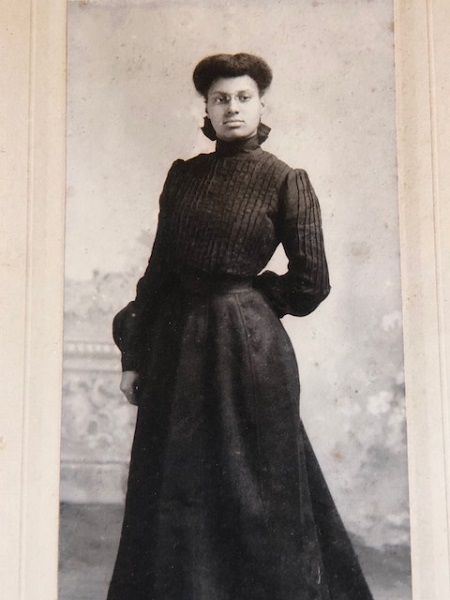
In 1905, Rev. Marshall Lee married Hannah May King, originally of Maryland. The couple had four daughters including Elizabeth, Agnes, Mary, and Olive. Rev. Lee received his elementary and secondary education in Conshohocken’s public schools. He studied theology and English at Temple University in Philadelphia.
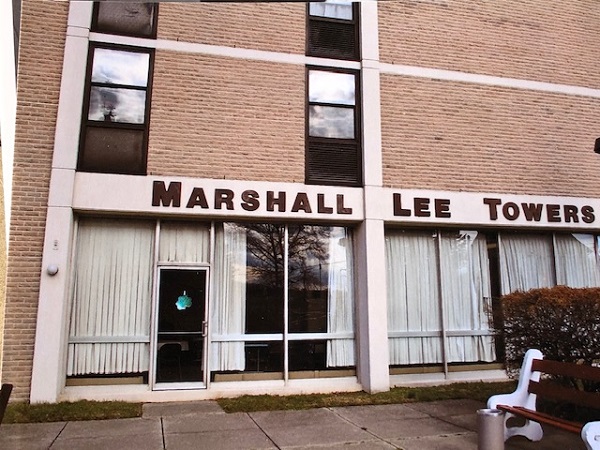
Rev. Lee accomplished a lot in his lifetime and one of his biggest achievements without him even realizing it was the formation of a “Colored” Youth Center opened on October 1, 1945.

During the late 1930’s Conshohocken’s black population was growing in leaps and bounds thanks to equal wages throughout the boroughs industries. Equal pay for men of all color and religious backgrounds made owning a home in the borough much easier. The borough had three banks operating within the borough limits at that time all looking to lend mortgage money to potential home owners. It was during this time-period that many families were having five, six, seven children and more. Our schools classrooms were exploding wall to wall with children.
While church programs and summer activities kept some of the children busy some of the time Rev. Lee was looking for a more structured-educational evening setting for members of his church and for Conshohocken’s black community.
Rev. Lee was the Chairman and founder of the Colored Youth Center, but interestingly enough while the officers of the organization were black residents, the board of directors was made up of some of the borough’s very influential white residents. Borough fathers and business leaders took notice to Rev. Lee’s new youth center project. Questions abound in the back-rooms of civic and official borough meetings, “Would Rev. Lee’s youth and recreation center succeed, or fail?”
If the program succeeded, although it was never openly discussed, then perhaps a white youth center would follow, but if it failed, well, again never spoken out-loud but, it was a “I told you so situation.”
An article appeared in the Conshohocken Recorder newspaper in the fall of 1945 is reproduced below:
Colored Youth Recreation Center
Scheduled to Open Here October 1
(Dated September 18, 1945)
“Following the modern trend of providing more wholesome, supervised recreation for young folk to offer an outlet for youthful energy and activity a Colored Youth Recreation Center will be opened about October first on the upper floor of the Vandergrift building at Elm and Harry Streets, it is announced today.
The new center will find the need for a supervised program for recreation of colored young men and women and will offer a meeting place for community Negro projects here.
The center will be open every night under a schedule which will set it aside on designated nights for colored boy scouts, for a troop of colored girl scouts, soon to be organized with other nights assigned for recreation activities for the groups selected by age.
Rev. Marshall W. Lee, pastor of St. Paul’s Baptist (Colored) Church is general chairman of the new project with Andrew Lewis, vice president; Joseph J. Lawler, treasurer; and Mrs. Zora Clark as secretary.
Spencer L. Jones, Judge E. Arnold Forrest, Seth K. Mitchell, Ura Butler and Ephriam Lake form the Board of Directors.
Nucleus of the treasury of the new center is a grant of $500 yearly from the Conshohocken Community Chest. The headquarters has been completely renovated and furnished and last-minute decorative touches are being completed.
The first undertaking of its kind here the project had been underway for close to a year and promises to fill a long-felt gap in community recreation projects here. The building in which the Center is located is the former Bate building.”
Although Rev. Lee didn’t notice or recognize it at the time, but this might very well have been his greatest contributions to Conshohocken. Rev. Lee went on to do some great work in his lifetime but I believe that the opening of the Colored Youth Center directly led to the discussion, building and opening of Conshohocken’s Fellowship House within a few years of Rev. Lee’s rec center.
When our borough and business leaders recognized the success of Rev. Lee’s efforts talks began about opening a community-wide rec center. In 1949 a Conshohocken High School Junior Councilman program reported that there was a need for a rec center to help battle juvenile delinquent problems in the borough, within two years they broke ground for a rec center at Sixth Avenue and Harry Street. Newton Walker, part owner of The Walker Brothers Industry, along with his brother Hervey helped finance the project and at the ground breaking ceremonies stated that “this recreation center will be a great place of fellowship where all the borough’s residents will come together to enjoy this facility known as “The Fellowship House.”
With those words the need for a separate black youth center was no longer needed. But not to be overlooked is the fact that Rev. Lee’s Colored Youth Center may very well have laid the ground –work and may very well have been the driving force that created The Fellowship House recreation center.
For more than half a century Rev. Lee served on many committees working to better our community. Aside from his pastoral duties Rev. Lee was Chairman of the Montgomery County Housing Authority which he served for an incredible 34 years, he also served as the Authority’s Vice Chairman and Treasurer. In 1963 while a member of the Housing Authority Rev. Lee openly talked to borough leaders about the need for better housing in Conshohocken;
“There are some slums here, and there need not be. With help from the County Housing Authority; we certainly could provide different types of homes, which especially are needed for the elderly.”
This comment was taken from an interview in September 1963, within a decade a senior citizen housing development was constructed on the corner of Third Avenue and Fayette Street on the site of the old Conshohocken Presbyterian Church. The senior living housing complex bears Reverend Marshall Lee’s Name, “The Marshall Lee Towers,” with good reason. In recognition of his many years of service to the community the 80-unit-highrise towers bearing Rev. Lee’s name in big bold black letters was dedicated in the spring of 1974.
Besides serving as the Treasurer of the Baptist Minster’s Conference of Philadelphia and vicinity he was also a Director for the Health and Welfare Department of Montgomery County. He also served as the President and Vice President of the Visiting Nurse Association and the Treasurer of the Conshohocken Borough Authority. Rev. Lee served as Director of the Red Cross in Montgomery County for a number of years and a Director of the Tuberculosis Society of Montgomery County.
Rev. Lee served as a Chairman of the Rent Control Board of Bucks and Montgomery County. He was also a moderator for the Central Union Association for a number of years. Rev. Lee organized the Human Relations Committee of the Southeastern Montgomery County and was President of the Conshohocken Ministerium. Just as the Great Depression of the 1930’s broke Lee served on a committee that helped feed the needy back on the fall of 1929.
Rev. Lee was a very busy man during his lifetime and yet a very simple man, he loved traveling and in the mid 1950’s traveled to the World Baptist Alliance in London for the American Baptist Convention, and also toured seven other countries.
It was a cold bitter February morning in 1976 when Rev. Lee stood at his pulpit in St. Paul’s Church for the last time announcing his retirement having served Conshohocken for 54 years.
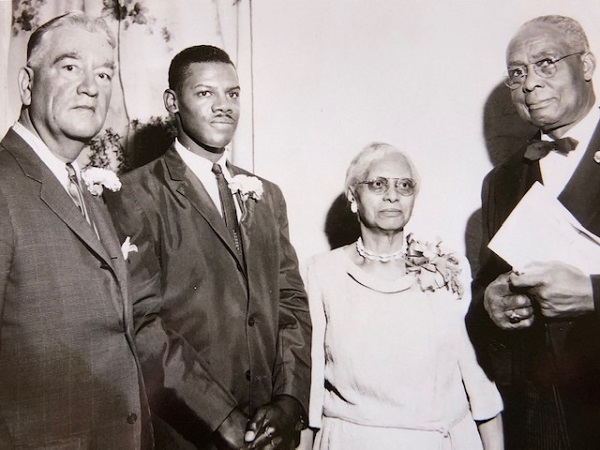
Within a year of his retirement in January 1977 Rev. Lee passed away at Montgomery Hospital at the age of 90. Rev. Lee had lived a life, he founded St. Paul’s Church, lived and guided his congregation through the Great Depression, World War II, segregation throughout the country and the 1960’s hippie movement.
In all his years of participation in the community Rev. Lee never saw color, and perhaps that’s what allowed him to accomplish so much. He succeeded in every aspect of his life and was the recipient of many awards. Rev. Lee was honored among world notables in the 1964 edition of the International Blue Book, he was also honored in 1972 for 50 years of service to the community by the Conshohocken Chamber of Commerce. Rev. Lee’s wife Hannah May died just two years earlier in 1974 at the age of 88, the couple had been married for 69 years.
A year after Rev. Lee’s death St. Paul’s Church held a banquet to honor the memory of Marshall and Hanna May Lee. Two years after his death in the summer of 1980 a monument in honor of Mr. and Mrs. Lee was dedicated at St. Peter’s Barren Hill Cemetery in Lafayette Hill.
And finally, let’s just take a minute and look at the life of Abram’s granddaughter and Marshall’s daughter Olive Lee Banks. It should be noted that Olive was a groundbreaking Conshohocken citizen, who spoke and led with actions and not so much words.
OLIVE LEE BANKS
BORN April 19, 1911
DIED October 6, 2015

Just like her grandfather Abram Lee, Olive Lee Banks lived to be 104 years of age. Olive was a teenager when her father Reverend Marshall W. Lee established St. Paul’s Church at Third Avenue and Hallowell Street in Conshohocken. She attended Conshohocken’s public schools graduating in 1929. Olive was a trail-blazer not interested in taking on the typical housewife role.
She completed an engineering drafting course at the Murrell Dobbins Vocational School in Philadelphia, Olive was the only African American student in her class. Securing a job in drafting in the early 1930’s as an African American female with no experience was nearly an impossible task. But with Olive’s talent, a little luck and with help from one of her teachers at Dobbins she landed a job at the E. G. Budd Manufacturing Company as an engineering draftsman. To no-one’s surprise she was the first African American female to work at the Budd Company. E. G. Budd, (Edward Gowen Budd) in his early years worked with the Hale and Kilburn Company designing all-steel passenger rail-cars for the Pullman Company. Budd went into business on July 22, 1912 designing and building a number of cars for the Dodge Brothers and other automobile and train components. When Olive joined the Budd Company they had a factory at 25th and Hunting Park Avenue in Philadelphia and employed over 2,000 people. Olive’s job was to design rail cars for trains.
Olive left the Budd Company and later worked for the Federal Government at the Philadelphia Signal Depot and in 1949 she joined the Montgomery County Planning Commission staff.
It came as no surprise in the summer of 1962 Olive became the first African American official of the Montgomery County Republican Committee. Olive was unanimously elected as the committee’s Secretary at the bi-annual reorganization meeting in July 1962.
Olive married Edward Randolph Banks in November 1950, and shared a life together until he passed away in 1989.
All of Conshohocken’s residents both male and female looked up to Olive Lee Banks as a strong individual, a community leader, and teacher in the church.
All of this brings me back to the house at 352 East Sixth Avenue, I look at the man Abram who raised 12 children in that row house. Abram had every-right to be ticked off at the world having been born a slave, traumatized by witnessing his brother’s murder and no-one would have blamed him. And yet he turned what I believe was anger into something much more positive, raising his children, Marshall being one of them and giving the residents of Conshohocken this gift of a son, who managed to do more in his lifetime for the well-being of the residents of this borough than perhaps any other resident in the past 170 years.
I believe that 352 East Sixth Avenue had little to do with the kindness of Abram Lee but rather stepping-up and being the good neighbor that most of us would like to have, particularly in these trying times.
Not many residents today have ever met or knew Reverend Marshall Lee as he passed away more than four decades ago, but as long as I’m alive I’ll keep telling his story. Both Reverend Abram Lee and his son Reverend Marshall Lee have left an indelible mark on this borough and should never be forgotten.
Photographs shown above:
Abram Lee’s house at 352 East Sixth Avenue.
Reverend Abram M. Lee, born a slave in Plains Virginia
Reverend Marshall Lee
Hannah Lee, Marshall’s wife
Exterior shot of the building that bears the name of Marshall Lee
Dedication of Marshall Lee Towers, 1974, a facility that Marshall Lee lobbied for, from left Rev. Lee, Ruth Shanne, Executive Director and Marvin Gilman Rep Builder.
April 1965, celebrating two anniversaries, the 40th anniversary of St. Paul’s Church and the 60th anniversary of marriage between Rev. Lee and his wife Hannah. Also in the photo were Judge Fred B. Smilie and James Groves.
Olive Lee Banks celebrating her 100th birthday in May 2011
We thank you for reading another exclusive “History of a House” here on Conshystuff.com, Please feel free to visit our other articles on “History of a House” on our web-site.

